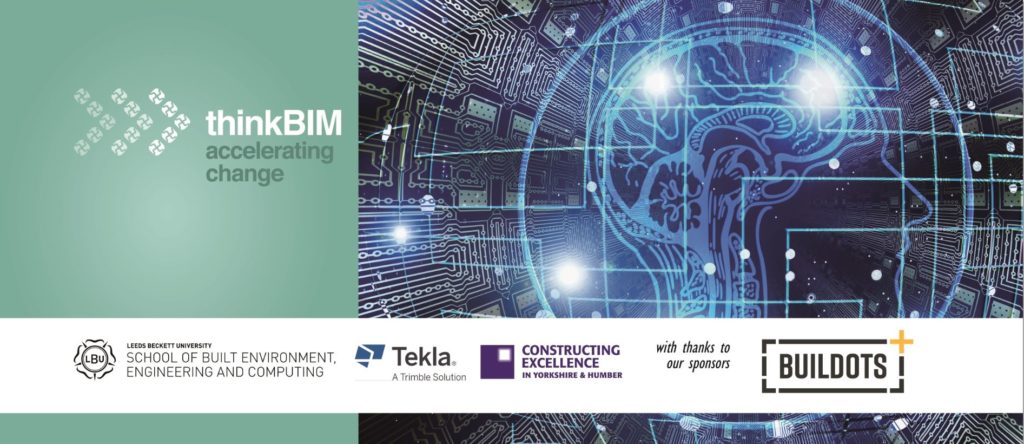Level 1 – the critical foundations to delivering on digital projects

Here at thinkBIM we are very aware that there is still a great need to explain the fundamentals of working digitally to both new delegates as well as regular attendees. Despite surveys that suggest a huge and comprehensive uptake of BIM in the UK; the government mandate and numerous organisations proclaiming their ability to deliver Level 2 (or beyond – really??) we regularly meet lots of businesses still bewildered as to how and where they might need to start out on their ‘BIM journey’.
So cue thinkBIM’s November event; Level 1 – the critical foundations to delivering on digital projects. Hot on the heels of our fifth birthday party in September and our successful Government Mandate twilight event in October came a whole evening dedicated to a 40 page British Standard first published in 2007. But a geek-fest this was not, well not completely. BS1192:2007+A2:2016 Collaborative production of architectural, engineering and construction information – Code of practice to give the full title is absolutely fundamental to the concept of defining the rules of collaborative working and delivering projects digitally. You can download the standard here http://bim-level2.org/en/standards/
The scope of the standard is well considered, and when read in conjunction with the preceding Introduction makes it clear why the processes outlined in this document are fundamental to collaborative working practices. It really is worth reproducing these words here before we move on –
So after all that what did we learn at the event. Well John Adams gave us a self-proclaimed wedge-free presentation. Three slides in we had the first obvious, but often over-looked requirement of Level 2 fundamentals – do Level 1 first! John walked us through the process of issuing documents around the process in the standard but reminded everyone of the following too
Buy CDE > Set Project Number > 4 Folders > WIP, Shared, Published, Archived does not equal a CDE!!
John’s final words about using the standard; don’t deviate – it ruins everything.
John’s slide deck: thinkbim-level-one-cde
After John’s presentation it was my turn to speak again at thinkBIM. In apparent wave of extreme geekiness I had decided to speak on Suitability Codes. Why – because in my opinion they are fundamental to the standard and the underlying collaborative working requirements that the standard advocates. Why you are issuing data, for what purpose, is as fundamental as actually issuing the data itself in my opinion and is important both contractually and practically. Even now I’m not sure that I’d got everything in my slides right, in fact the next presentation explained one specific part that I’d not grasped myself – a great example of where everyone learns at thinkBIM!
Duncan’s slide deck: suitability-codes
The third presentation of the evening came from Lee Chappelow from SES. After explaining how SES have set about creating and operating their own CDE Lee took us through 13 slides to explain how a document produced by the SES BIM team moves to published status. Now on the face of it this sounds horrendous; thirteen stages to just get a document approved but for me a lot of what Lee was saying is what good practice should look like and the thoroughness he was demonstrating is as much about an industry that has been so pressurised to deliver that corners are cut or risk just passed downstream rather than owned.
Lee showed us what good looks like, and what good as a digital workflow should be. Lots of food for thought and the feedback from the event certainly confirmed this too.
Lee’s slide deck: thinkbim-cde
Thanks to John and Lee for helping to deliver another great thinkBIM. In this case the slides seemed so important we have published them in full for you all to reference again as needed.
As a final post script I do accept that working in accordance with BS1192:2007 does look complicated and daunting but once you get to grips with the standard and start using it the processes do become easier. But it is still a bit of challenge – only a week after the event I had a 30 minute discussion with a contracting friend over the interpretation of just one of these suitability codes in the standard.
So as we said on the night – to use the standard effectively you must make sure the project team has a common understanding of the document – this may mean defining, explaining, agreeing and documenting how the standard is to be used in the BIM Execution Plan. But remember don’t alter it – otherwise then it’s not a standard.
thinkBIM – 2nd November 2016
#Duncan Reed, Chair thinkBIM



